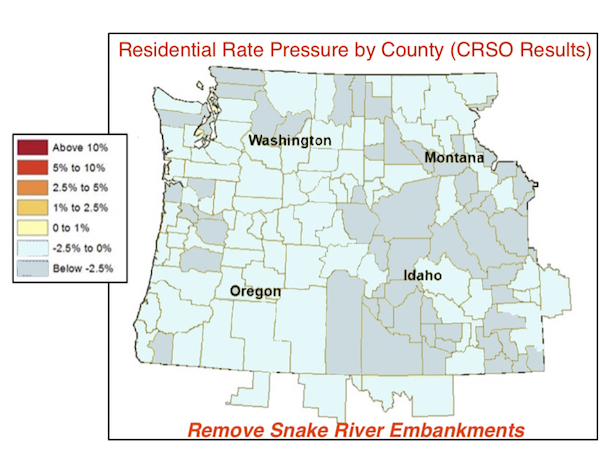forum
library
tutorial
contact

Real Movement on Salmon Issues
by Editorial BoardDaily Astorian, December 30, 2023
|
the film forum library tutorial contact |

|
Real Movement on Salmon Issuesby Editorial BoardDaily Astorian, December 30, 2023 |
 Little noticed by anyone who isn't passionately involved in Pacific Northwest salmon issues, recent months have brought a cascade of efforts to turn the tide for species swimming near the precipice of extinction. As with all things to do with our region's most iconic fish, controversy and doubts swirl around it all.
Little noticed by anyone who isn't passionately involved in Pacific Northwest salmon issues, recent months have brought a cascade of efforts to turn the tide for species swimming near the precipice of extinction. As with all things to do with our region's most iconic fish, controversy and doubts swirl around it all.
The Biden administration and Columbia River tribes with treaty-protected fishing rights just announced a deal to ramp up salmon spending, while pausing long-running litigation and pushing to breach the four lower Snake River dams within less than a decade. Washington, Oregon and the four lower river treaty tribes will get $100 million for fish restoration projects and $200 million will go for hatchery modernization, upgrades and maintenance.
Although these sums pale in comparison with billions expended until now on Columbia salmon, it bears remembering that much past "spending" was symbolic, in the form of water sent downstream to support natural salmon migration instead of generating electricity. New actual cash may be useful in more tangible and feasible ways.
The aim of restoring natural water flows on a critical segment of the Snake River via some form of dam breaching is a far bigger challenge. It faces adamant opposition from agricultural and transportation interests, along with a skeptical and practically broken Congress that would have to OK major hydro-system changes. Is it dead on arrival? Not quite, but much depends on election results and a hardheaded assessment of the likely outcome if tribal lawsuits eventually resume.
Rather than pinning any hopes on Snake River restoration, smart planning will center on achievable goals, such as habitat acquisition and restoration, predator control and smarter hatchery practices.
Discussions or actions involving hatcheries run headlong into the competing view that hatchery-raised salmon have an inherent array of adverse effects on naturally spawned salmon.
This is one focus of an Endangered Species Act petition filed by two environmental groups on behalf of Washington coast Chinook runs. This petition passed an initial hurdle, convincing the National Marine Fisheries Service to take a close and currently ongoing 90-day look at the arguments. Although the petition is mostly focused on troubled spring-run Chinook, the fisheries service is also going to freshly analyze summer and fall Chinook runs.
Anything short of an outright rejection of the petition's main contentions will result in closer attention to everything threatening Chinook that return to watersheds between the Columbia and Elwha rivers. Hatcheries would certainly be part of this equation, due to suspicions that hatchery salmon impact wild runs through competition and other factors.
Meanwhile, Washington state has been ramping production of hatchery Chinook to aid endangered southern resident killer whales that hunt between the Salish Sea and the outer coast. The state will resist backtracking in any way that makes orca survival harder. Nor would changes in state hatcheries do anything to curtail foreign production of salmon intended for Asian markets. All this emphasizes the need for much better insights into what happens to all kinds of salmon and other species out in the open ocean -- scientific research still only at its inception.
The need for nations, states, tribes and other entities to cooperate on salmon and other subjects was brought to light again by Washington's 2022 legislative effort to rapidly draw down the number of gillnet fishing licenses on the Columbia.
The $14.4 million Columbia River license reduction program funded by the Legislature last year axed the number of licenses from 240 to 67, according to a recent report by the Washington Department of Fish and Wildlife. Though gillnetting is a proud local tradition that allows nonfishing residents to partake in gourmet-quality salmon, this decline in fishing pressure has to be be seen as useful and historically inevitable.
This reduction was undertaken without a parallel action by Oregon, an omission some feared would result in gillnetters taking a big payday in Washington and then simply buying one of the available Oregon licenses. Considering the precariousness of the owner-operator fishing business, any significant rush to jump back in with an Oregon license is unlikely.
Clearly, it makes sense for the two states to act in concert when managing salmon in the shared waters of the Columbia. However, there are subtle yet important differences in their underlying salmon-management philosophies. They must look beyond these and unite in finding new ways to support the heritage of sustainable commercial salmon fishing, encouraging the rural people who have a passionate stake in salmon survival to stay engaged in the fishery.
Any brief catch-up like this one glosses over many other salmon-related initiatives and barely hints at the incredibly complex details of weighing often-conflicting priorities.
Success is far from certain for overall salmon survival, the recovery of wild spawning runs and the diverse human activities that also depend on ample clean, fresh water. But the fact that there is so much going on is encouraging.
If some salmon do fade into the eternal tragedy of extinction, it will not be from lack of attention.
learn more on topics covered in the film
see the video
read the script
learn the songs
discussion forum